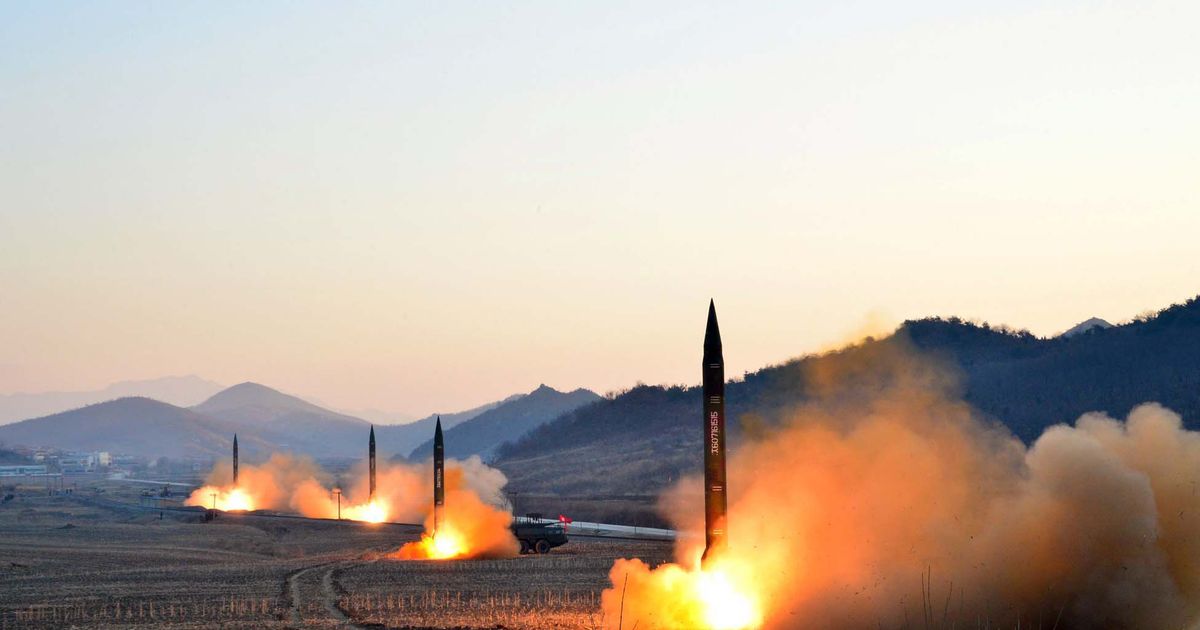Why Trump pressed the nuclear weapons testing button
That the President is responding in this way to the deterioration in the regional security environment is another counter to the notion that he is an isolationist looking for any excuse to abandon allies.
Last week, hours before his meeting with Chinese President Xi Jinping, Donald Trump announced that because of other countries testing programs, he had instructed the Department of War to immediately “start nuclear weapons testing on an equal basis.” In that one post, Trump upended an important shibboleth of nuclear non-proliferation which the US has upheld since 1992.
This came on the back of an announcement the day before that the US will allow South Korea to build nuclear-propelled submarines in Philadelphia shipyards. Japan was also in on the act. Its new Defence Minister Shinjiro Koizumi reiterated last Friday that Tokyo is considering all options to strengthen its defence capabilities, including nuclear propulsion for submarines.
Traditional non-proliferation advocates are scathing. Which begs the question of why the sudden American interest in nuclear weapons testing and desire by two of its most powerful Asian allies to acquire nuclear propelled submarines? Trump might be the disruptive ringleader in this context. But he is responding to worrying trends rather than causing the instability in the first place.
To be sure, China, Russia and the United States have successfully upheld a de-facto moratorium on nuclear testing since 1996. Each has signed but not ratified the 1996 Comprehensive Test Ban Treaty. Whilst the US Department of State accused China and Russia of conducting very small-yield tests in 2020 and 2022 respectively, there have been no open-source reports of significant nuclear explosive tests by either country.
Historically, the US has conducted 1054 above ground and underground tests compared to Russia’s 715 and China’s 47. Well ahead when it comes to the gathering of militarily relevant technical data from such testing, the US would have the most to lose if non-proliferation norms on testing are abandoned, with countries such as China and North Korea having more to gain.
As the benefit of resuming nuclear testing for the US is questionable, perhaps the announcement was more a psychological ploy before meeting Xi than anything else. Regardless, the status quo is already quickly changing, and the US feels obliged to respond.
In the past two decades, Russia, China and North Korea have been the greater nuclear disruptors. For example, Russia’s heavy dependence on nuclear weapons to coerce and intimidate Ukraine, NATO countries and the US has accelerated as its war economy begins to feel the strain. Last week Russia announced it had tested an autonomous Poseidon nuclear-capable torpedo which it claims can trigger radioactive ocean swells. It recently tested a nuclear-powered cruise missile with unlimited range, intended to evade American missile defences.
As disruptive as he might be, Trump is a risk but also an enormous opportunity for nervous allies.
Whilst the Russian threat to use low-yield tactical nuclear weapons on the Ukrainian battlefield – an “escalate to de-escalate” strategy – has not prevented NATO support for Ukraine, it has succeeded in restraining the US from providing Kyiv with weapons capable of conducting strikes deep into Russian territory.
North Korea is developing nuclear propelled submarines which is why Seoul has a growing interest in acquiring the same kind of technology. But it is China which has embarked on a genuine nuclear breakout.
Based on current trends, China will become a quantitative and qualitative nuclear weapons peer of the US by the early to mid-2030s with a diversified, accurate, and survivable force rivalling America’s.
Rather than having only high-yield weapons and long-range nuclear missiles as a strategic deterrent against nuclear attack, the People’s Liberation Army is developing a range of tactical nuclear weapons, the latter being lower-yield weapons deliverable in a conflict theatre.
The US has not been developing nuclear capable short-range missiles in recent times nor has it deployed tactical nuclear weapons in Asia. One strategic effect is what is known as the nuclear missile gap. If China threatens to use a tactical nuclear weapon against allied forces, the US can only counter with threats to respond with a strategic nuclear weapon to target a major Chinese city.
Both the Chinese and US allies know that the US is highly unlikely to do so given the disproportionate devastation that would cause and the risks it carries for US homeland targets. If China is not adequately deterred and allies are not reassured, then US extended nuclear deterrence is dangerously weakened. In that situation, Chinese nuclear coercion becomes more effective, and therefore more likely.
The point is that deterioration in the regional security environment is not Trump’s doing. That he is responding in this way is another counter to the notion that he is an isolationist or one that is looking for any excuse to abandon regional allies.
Finally, critics of AUKUS would do well to remember this: nuclear propulsion is one of the key advantages the US has over China and Russia. Australia is not an outlier but a pioneer in seeking this technology.
The events over the past fortnight reinforce the importance and urgency of progressing and funding AUKUS, especially Pillar 1 associated with nuclear propelled submarines. Which is another reminder that as disruptive as he might be, Trump is a risk but also an enormous opportunity for nervous allies.


